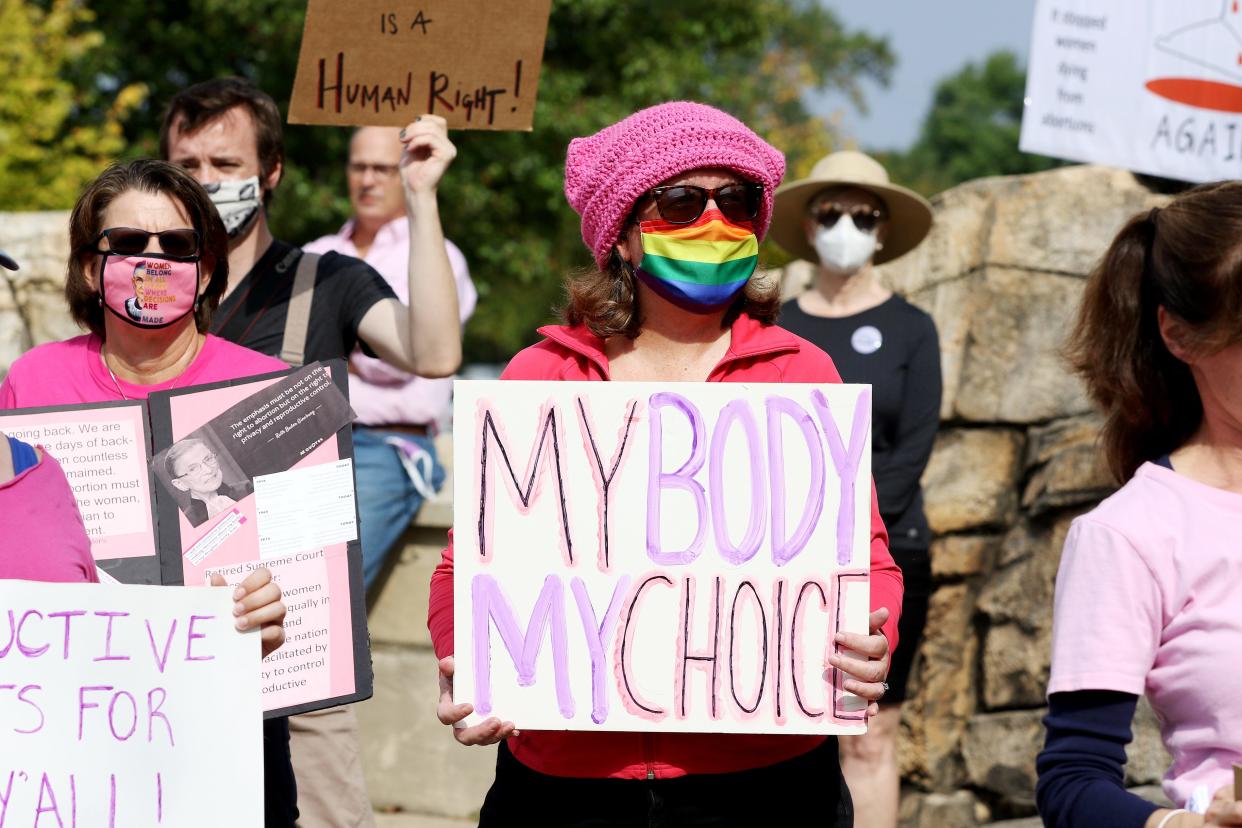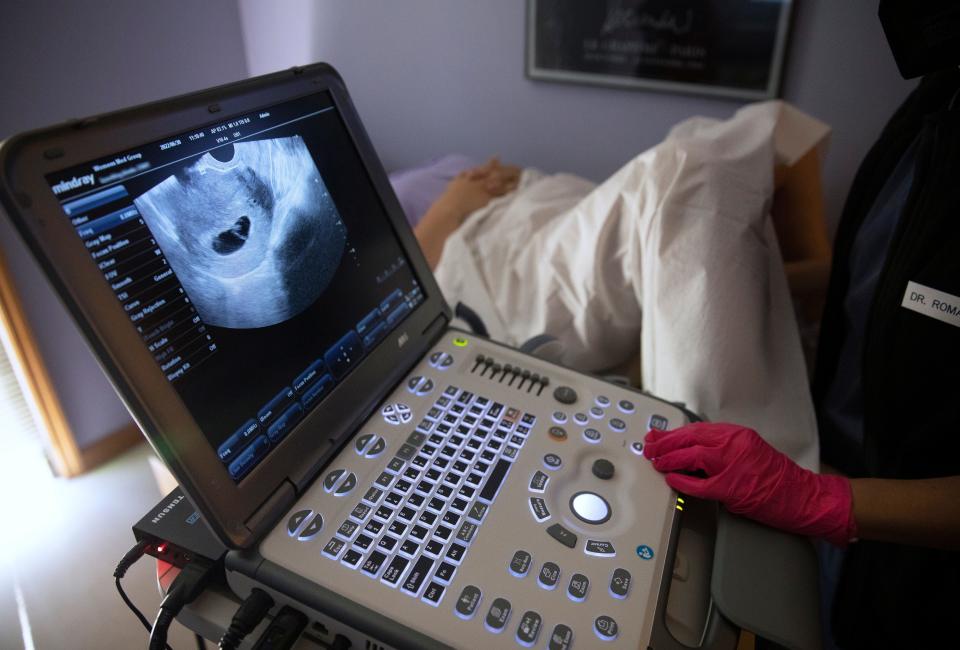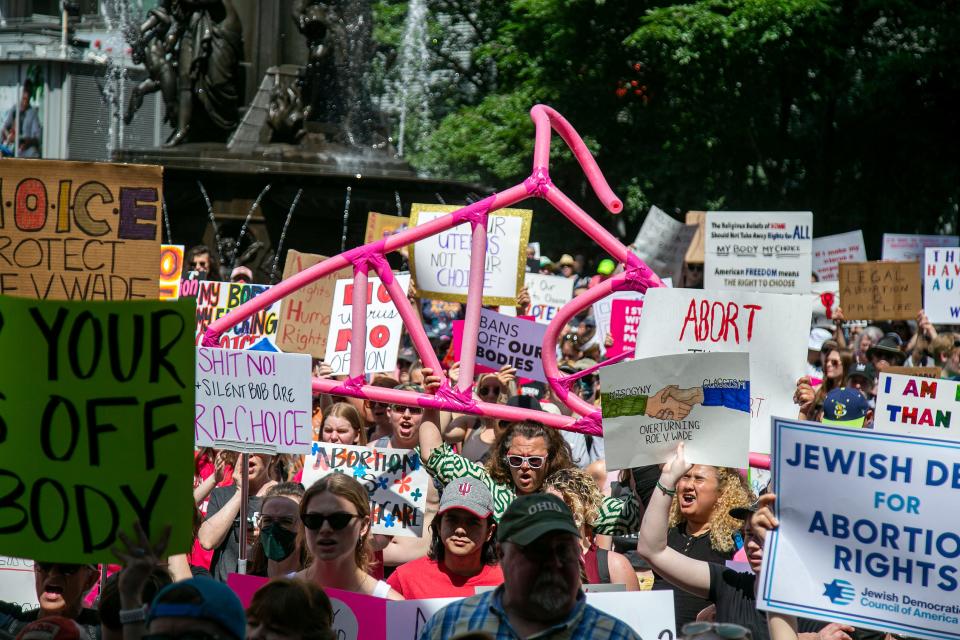Opinion: Research shows harmful effects of abortion bans

It’s been nearly a year since the Dobbs v Jackson Women’s Health Organization decision upended abortion rights across the United States.
Immediately after the Dobbs decision, Ohio’s "six-week" abortion law went into effect, banning abortion after detection of embryonic cardiac activity − usually around six weeks gestation. While a judge in Hamilton County blocked the ban in mid-September (and it remains blocked as of this writing), state legislators are working in earnest to reinstate it.
Recent data from the national, research-driven #WeCount project shows the number of people able to have abortions in Ohio dropped dramatically after the Dobbs decision. For example, July 2022 saw 60% fewer abortions in Ohio compared to what we would have expected given the numbers pre-Dobbs. There were 62% fewer in August 2022. Even though Ohio’s "six-week" ban was blocked in mid-September, it took time for abortion care to return. There were 30% fewer abortions than expected in October.
For decades, researchers have documented how abortion bans cause harm, especially for communities of color and low-income folks. Decreased abortion access can lead to more people dying or having severe complications from childbirth. Research also shows people who can’t access abortion are more likely to stay trapped in abusive relationships.

As someone who has worked in and studied reproductive health care in Ohio, I know abortion bans have very real consequences for those living here.
In my work, I have completed nearly 50 interviews with Ohioans who have struggled to access abortion care since the Dobbs decision − quite literally, the people behind the #WeCount numbers. My research lets me hear the evidence from those affected by abortion bans. I have listened to them cry and share their fear about not being able to have an abortion. I have listened to them vent their anger and frustration about laws that make it hard for them to access this necessary health care. I have heard their joys and relief when they did get care − their plans and dreams for a future made possible by abortion access.
Sometimes, the people I hear from share they are struggling with addiction and are trying to put their lives back together. Some have health complications that make pregnancy dangerous. So many of them are parents who seek an abortion to prioritize care for the children they already have.
As someone with loved ones in Ohio and other abortion-restrictive states, I know the cost of the bans on a more personal level, too. I look at my sister and friends as they celebrate wanted pregnancies and fear that if they experience complications, the state will allow them to die rather than permit an abortion. I look at the children and pre-teens in my life and am troubled by what the future holds for them. I worry about my own health and wonder if I will be able to safely carry a pregnancy – if someday I may need an abortion to save my own life.

Despite the state’s efforts to squash access to abortion, people are working every day to improve access to care. For example, Ohioans for Reproductive Freedom is collecting signatures in support of a ballot measure that would protect access to sexual and reproductive health care in Ohio. National Network of Abortion Funds connects potential donors to local abortion funds, and Ohio Women’s Alliance Member Assistance Program helps abortion seekers pay for childcare and other support.
If any of my interviewees read this letter, I hope you know: you matter. Your voices and experiences matter. It’s been my absolute privilege to have been allowed to hear such an intimate part of your lives, and I carry your stories with me always. When things feel impossible, I remember you − and I look at my loved ones − and once more, dream of and fight for a more just future.
I invite other Ohioans to do the same.
Hillary Gyuras is a senior research associate with Ohio Policy Evaluation Network.

This article originally appeared on Cincinnati Enquirer: Opinion: Research shows harmful effects of abortion bans

